
Just in Time Quick Check Expressions with Variables
- Subject:
- Mathematics
- Material Type:
- Assessment
- Provider:
- VDOE
- Author:
- VDOE
- Date Added:
- 10/07/2024

Just in Time Quick Check Expressions with Variables

Just in Time Quick Check Equations for Problem Situations
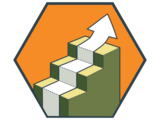
In this lesson sequence, students will work in teams to learn the MakeCode and Micro:Bit Development platform. They’ll develop basic programming skills, implementing input, output, variables, and conditional control structures. At the end of the sequence, students will compete in a “puzzle box” challenge, attempting to create a puzzle using their Micro:Bit, code, and craft supplies and earning points based on how challenging their puzzle is to solve.

NASA eClips Real World: Food Security -- Monitoring Crops from SpaceVideo Description: Discover how NASA's Earth-observing satellites gather data to monitor food growth. Dr. Inbal Becker-Reshef describes how mathematics is used to interpret satellite data and describe vegetation and crop yield. Dr. Hannah Kerner shares how algorithms and models use NASA data to describe and predict food supply and food shortages. This work through NASA Harvest provides tools for farmers and governments to describe and predict food security worldwide. Video Length: 5:25.NASA eClipsTM is a suite of online student-centered, standards-based resources that support instruction by increasing STEM literacy in formal and nonformal settings. These free digital and downloadable resources inform and engage students through NASA-inspired, real-world connections.NASA eClips Real World segments (grades 6-8) connect classroom mathematics to 21st Century careers and innovations. They are designed for students to develop an appreciation for mathematics through real-world problem solving.

Video Description: At NASA everything begins with an idea. Physical models help NASA engineers and technicians test those ideas before building full-scale versions. Learn more about the important role physical modeling, building prototypes and mathematics play in engineering solutions. Video Length: 3:11.NASA eClipsTM is a suite of online student-centered, standards-based resources that support instruction by increasing STEM literacy in formal and nonformal settings. These free digital and downloadable resources inform and engage students through NASA-inspired, real-world connections.NASA eClips Real World segments (grades 6-8) connect classroom mathematics to 21st Century careers and innovations. They are designed for students to develop an appreciation for mathematics through real-world problem solving.

Developed by the Science Museum of Western Virginia, this educator outline is intended to assist in guiding middle school-aged students through various activities using the Rokit Smart robot kit. The Rokit Smart utilizes Arduino, a widely-used open-source environment for programming that enables users to create interactive electronic objects. Designed through modules, the activities can be grouped to fit after-school, summer camp, or other student enrichment needs.

Developed by the Science Museum of Western Virginia, this educator outline is intended to assist in guiding middle school-aged students through various activities using the Rokit Smart robot kit. The Rokit Smart utilizes Arduino, a widely-used open-source environment for programming that enables users to create interactive electronic objects. Designed through modules, the activities can be grouped to fit after-school, summer camp, or other student enrichment needs.

Developed by the Science Museum of Western Virginia, this educator outline is intended to assist in guiding middle school-aged students through various activities using the Rokit Smart robot kit. The Rokit Smart utilizes Arduino, a widely-used open-source environment for programming that enables users to create interactive electronic objects. Designed through modules, the activities can be grouped to fit after-school, summer camp, or other student enrichment needs.

Developed by the Science Museum of Western Virginia, this educator outline is intended to assist in guiding middle school-aged students through various activities using the Rokit Smart robot kit. The Rokit Smart utilizes Arduino, a widely-used open-source environment for programming that enables users to create interactive electronic objects. Designed through modules, the activities can be grouped to fit after-school, summer camp, or other student enrichment needs. *Module 4 is meant to be done after Modules 1-3 are completed.
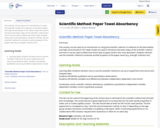
This activity can be used as an introduction to using the scientific method. It is relevant at all intermediate and high school levels( 6-12). Paper towels are used to introduce the basic steps of the scientific method and how it can be used to determine which type of paper towel is the most absorbent. Students will then use the scientific method to evaluate another property of the paper towel (e.g., strength, softness, etc).

This activity can be used as an introduction to using the scientific method. It is relevant at all intermediate and high school levels( 6-12). Paper towels are used to introduce the basic steps of the scientific method and how it can be used to determine which type of paper towel is the most absorbent. Students will then use the scientific method to evaluate another property of the paper towel (e.g., strength, softness, etc).
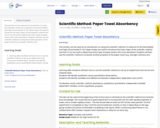
This activity can be used as an introduction to using the scientific method. It is relevant at all intermediate and high school levels( 6-12). Paper towels are used to introduce the basic steps of the scientific method and how it can be used to determine which type of paper towel is the most absorbent. Students will then use the scientific method to evaluate another property of the paper towel (e.g., strength, softness, etc).
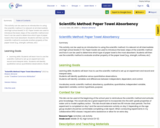
This activity can be used as an introduction to using the scientific method. It is relevant at all intermediate and high school levels( 6-12). Paper towels are used to introduce the basic steps of the scientific method and how it can be used to determine which type of paper towel is the most absorbent. Students will then use the scientific method to evaluate another property of the paper towel (e.g., strength, softness, etc).

Here is a simple lab report that can be used in any science class (6-12). The report is designed to help students identify hypotheses, independent and dependent variables, controls, constants, and to analyze experiments. I have also included tips on a simple way to teach your students to identify the IV and DV through a "cave man hypothesis" and how to teach controls with less confusion.
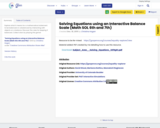
Explore what it means for a mathematical statement to be balanced or unbalanced by interacting with objects on a balance. Discover the rules for keeping it balanced. Collect stars by playing the game!
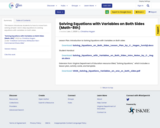
This lesson introduces students to how to move from solving simple 1 and 2 step equations to solving equations with variables on both sides.
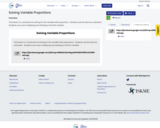
This lesson is a Jamboard of solving for the variable with proportions. Students use the Desmos calculator. Students use cross multiplying and dividing to find the variable.
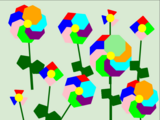
Students will create flowers using polygons with 3-10 sides, classify and arrange them, based on different attributes (SOL CS 4.5). This activity would be done with 4th graders, but it could be modified for 3rd or 5th grades. The students would work both individually and collaboratively.

This is a Google Slides that is to be used with the book Everything You Need to Ace Computer Science and Coding in One Big Fat Notebook, Unit 5, Chapter 14.
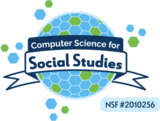
Students will apply their knowledge of the characteristics of the five major regions to create if-statements. As a warm-up students will complete a table using IF statements.During student-facing project, students will:Create 2-3 additional variables within the conditions chart that will direct the flow to determine the correct region.Record responses provided by their partner on an excel spreadsheet.Students will use responses provided to draw a conclusion of which region their partner is “located”.